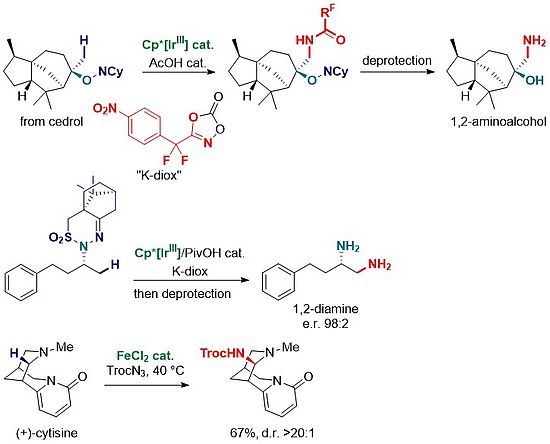Research
The functionalization of carbon–hydrogen bonds offers an attractive step-economical entry into valuable organic intermediates from simple hydrocarbon precursors. The current research of our group focuses on the development of various transition-metal-catalyzed methods for the functionalization of non-activated C(sp3)–H and C(sp2)–H bonds.
The reactions that we have recently developed allow the formation of C(sp2)–C(spn) bonds (n = 2, 3)from simple C(sp2)–X/C(spn)–H precursors (X = leaving group) using palladium catalysts. A variety of valuable carbocycles and heterocycles are generated through these methods.
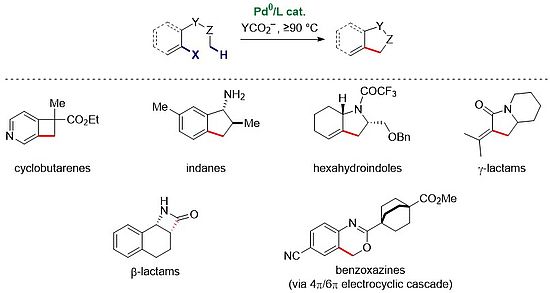
Review: Acc. Chem. Res. 2017, 50, 1114.
Leading papers: Angew. Chem. Int. Ed. 2003, 42, 5736; J. Am. Chem. Soc. 2008, 130, 15157; J. Am. Chem. Soc. 2010, 132, 10706; Angew. Chem. Int. Ed. 2012, 51, 10399; Angew. Chem. Int. Ed. 2016, 55, 2805; Angew. Chem. Int. Ed. 2017, 56, 7218; Angew. Chem. Int. Ed. 2018, 57, 12131; ACS Catal. 2023, 13, 12563.
Functionalization of distant C–H bonds
Recently, we exploited the 1,4-Pd shift strategy to reach more distant C(sp3)–H bonds and create rings that would be challenging to make through the direct reaction.
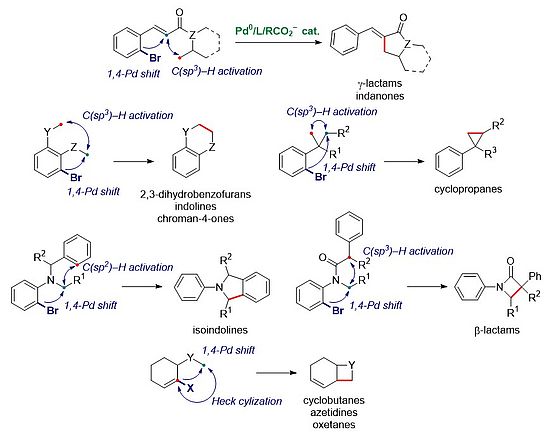
Enantioselectivity
We are developing enantioselective C(sp3)–H and C(sp2)–H activation reactions using various types of chiral catalysts (ancillary ligand, base, bifunctional ligand). These methods allow access to enantioenriched molecules containing stereogenic centers, axes, helices or planes, with potential applications in medicinal chemistry or chiroptical devices.
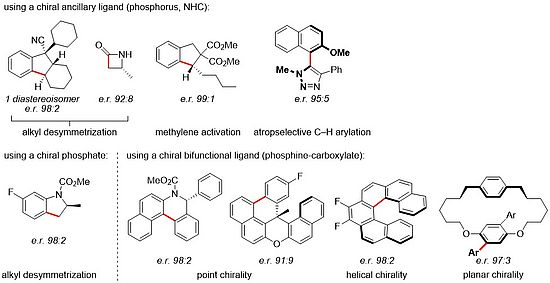
Review: Chem. Eur. J. 2021, 27, 1231.
Leading papers: ACS Catal. 2015, 5, 4300; Angew. Chem. Int. Ed. 2017, 56, 7218; Chem. Sci. 2017, 8, 1344; Angew. Chem. Int. Ed. 2018, 57, 1394; J. Am. Chem. Soc. 2020, 142, 2161;Angew. Chem. Int. Ed. 2021, 60, 5136; Angew. Chem. Int. Ed. 2021, 60, 7245; Nat. Chem.2023, 15, 872; Angew. Chem. Int. Ed.2025, e202500653.
Synthesis of natural products
C–H activation-based strategies allow to streamline the synthesis of bioactive natural products using simpler precursors.
In particular, we recently synthesized:
- aeruginosins (e. g., aeruginosin 298A), cyanotoxins isolated from various blue-green algae;
- lycorine alkaloids, originated from Amaryllidaceae plants (e. g., g-lycorane);
- (nor)illudalane sesquiterpenes (e. g., puraquinonic acid and russujaponol F), isolated from various species of higher fungi;
- pentacyclic dithiodiketopiperazines (e. g., epicoccin G and rostratin A), isolated from various types of fungi;
- prenylated chalcones (e. g., indidene C), isolated from Southeastern Asian plants.;
- randainin D and barekoxide, hydroazulene-type diterpenes isolated from plants and marine sponges, respectively (via non-C–H activation strategies).
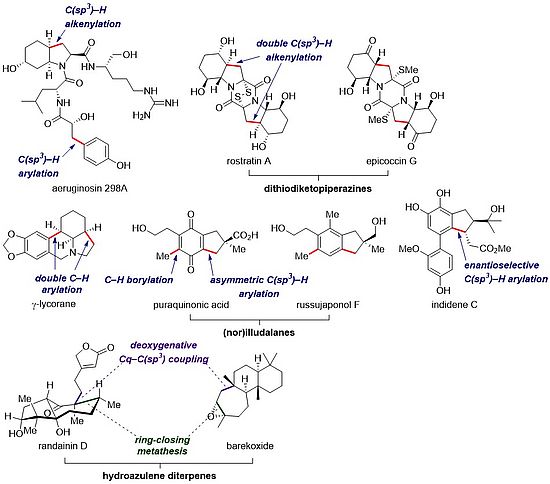
C–H amination
We are also interested in the development of new C–H amination methods. We recently reported a new dioxazolone reagent for directed iridium-catalyzed C(sp3)–H amidations. This reagent combines good reactivity and safety profile, and furnishes an easily cleavable amide. This C–H amination method leads to valuable 1,2-aminoalcohols and 1,2-diamines depending on the employed directing group. We also reported a simple iron-catalyzed a-amination of saturated nitrogen heterocycles, applicable to the late-stage functionalization of complex molecules.
